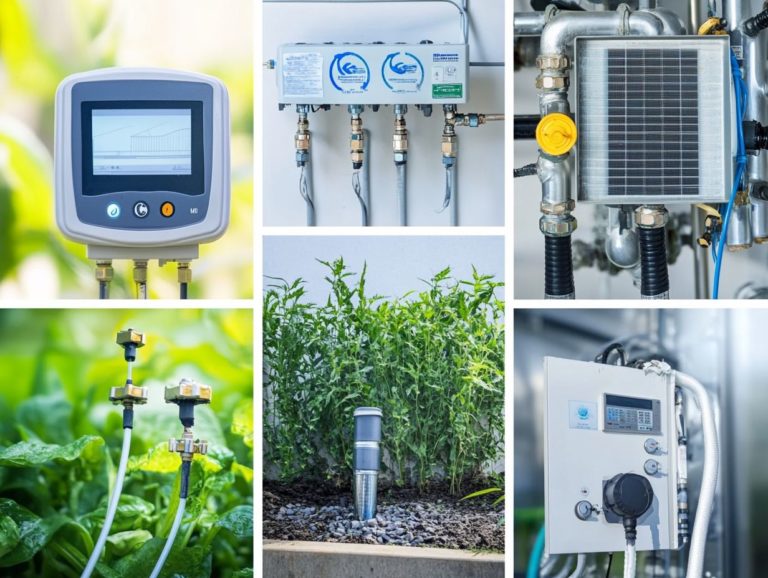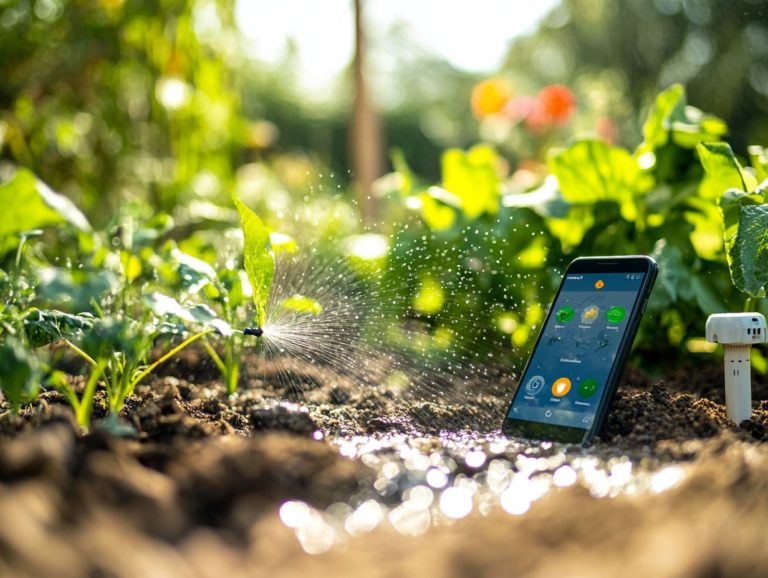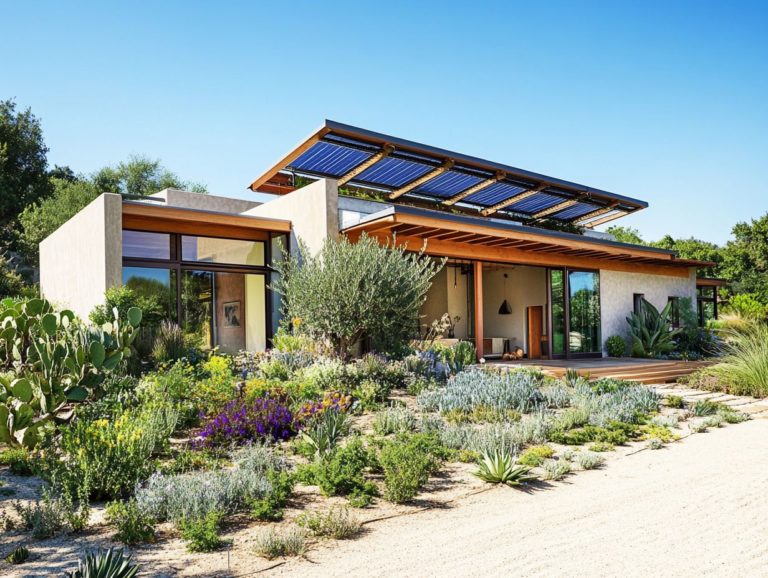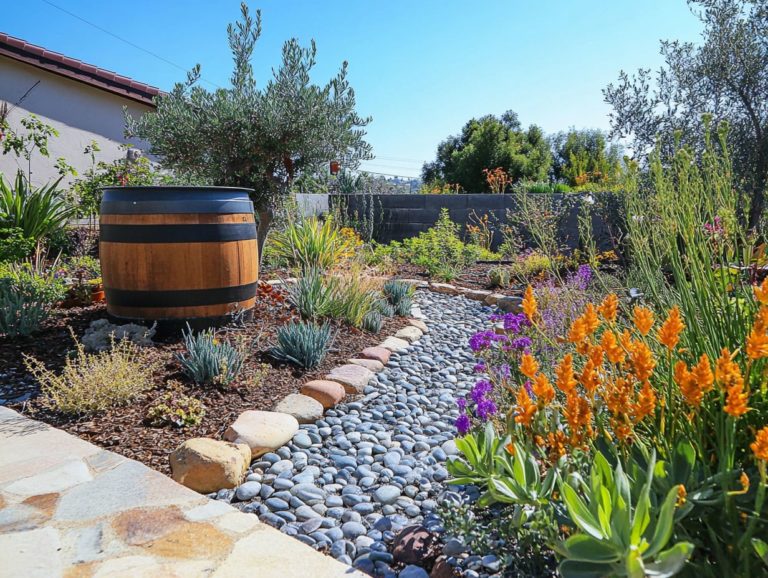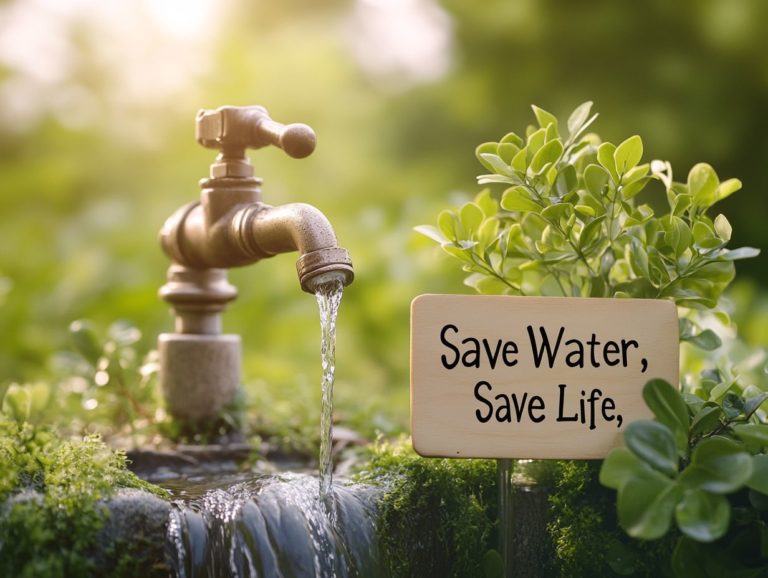Water-Saving Tips for Your Lawn Care
Water conservation is not merely a trend; it s essential for our environment and for maintaining a lush, healthy lawn without straining your budget.
You ll learn how to assess your lawn’s unique needs and the factors that influence water usage. From efficient irrigation techniques to selecting drought-resistant plants, this guide offers practical strategies for saving water while keeping your lawn vibrant.
You ll also explore maintenance practices that ensure your lawn thrives sustainably. Discover how to achieve a beautiful yard with a smaller ecological footprint, making both your lawn and the planet a little greener.
Contents
- Key Takeaways:
- The Importance of Conserving Water for Lawn Care
- Assessing Your Lawn’s Water Needs
- Water-Saving Techniques for Lawn Care
- Other Ways to Conserve Water in Your Lawn
- Frequently Asked Questions
- What Are Some Water-Saving Tips for Lawn Care?
- How can I reduce water consumption while still maintaining a healthy lawn?
- Are there any specific lawn care techniques that can help conserve water?
- What are some other ways I can save water in my lawn care routine?
- Are there any tips specifically for maintaining a lawn during a drought?
Key Takeaways:
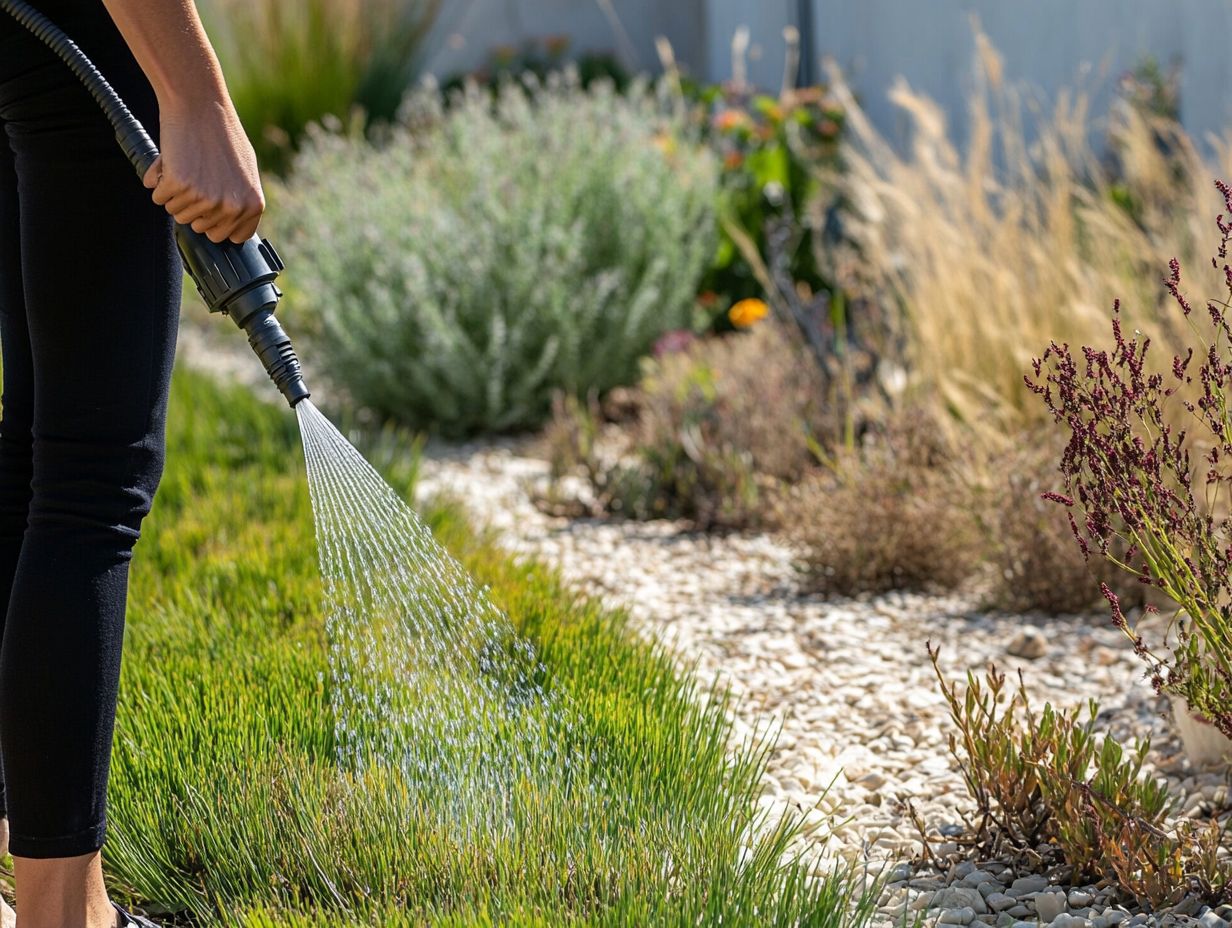
Conserving water in lawn care benefits the environment and saves you money in the long run. Assessing your lawn’s water needs is crucial for determining the right amount of water to use and preventing over-watering. Using efficient irrigation methods and choosing drought-resistant plants are key techniques for reducing water usage in lawn care.
The Importance of Conserving Water for Lawn Care
Conserving water is essential for nurturing healthy lawns while helping the environment in the long run and lowering water bills, especially in areas like Idaho Falls, where outdoor water use can significantly affect local resources.
Start using effective water-saving tips today! By adopting these strategies, you not only enhance the aesthetic appeal of your property but also play a vital role in reducing waste and fostering long-term environmental health.
Embracing eco-friendly practices and grasping water management principles allows you to create lush, vibrant landscapes without jeopardizing the planet s invaluable water supplies.
Environmental and Cost Benefits
The environmental and cost benefits of water conservation are remarkable, sustaining local ecosystems and significantly lowering your monthly water bills.
Embrace practices like xeriscaping a landscaping method that reduces the need for irrigation by featuring drought-resistant plants to cultivate vibrant landscapes while supporting local wildlife habitats.
Implementing smart irrigation technology, such as drip systems, ensures that your plants receive exactly the amount of water they need, reducing runoff and promoting healthier soil.
These methods bolster local ecology’s resilience and lead to substantial savings on your water bills over time, showcasing a perfect blend of environmental stewardship and financial wisdom.
Engaging in rainwater harvesting enhances these efforts, enabling you to utilize natural resources sustainably.
Assessing Your Lawn’s Water Needs
Assessing your lawn’s water needs is crucial for effective maintenance and optimizing water usage. Begin with a thorough water audit that carefully evaluates your irrigation systems. This process helps identify specific watering requirements based on soil moisture levels and the unique climate conditions in your area.
By doing so, you can ensure your lawn receives just the right amount of water it needs to thrive.
Factors Affecting Water Usage
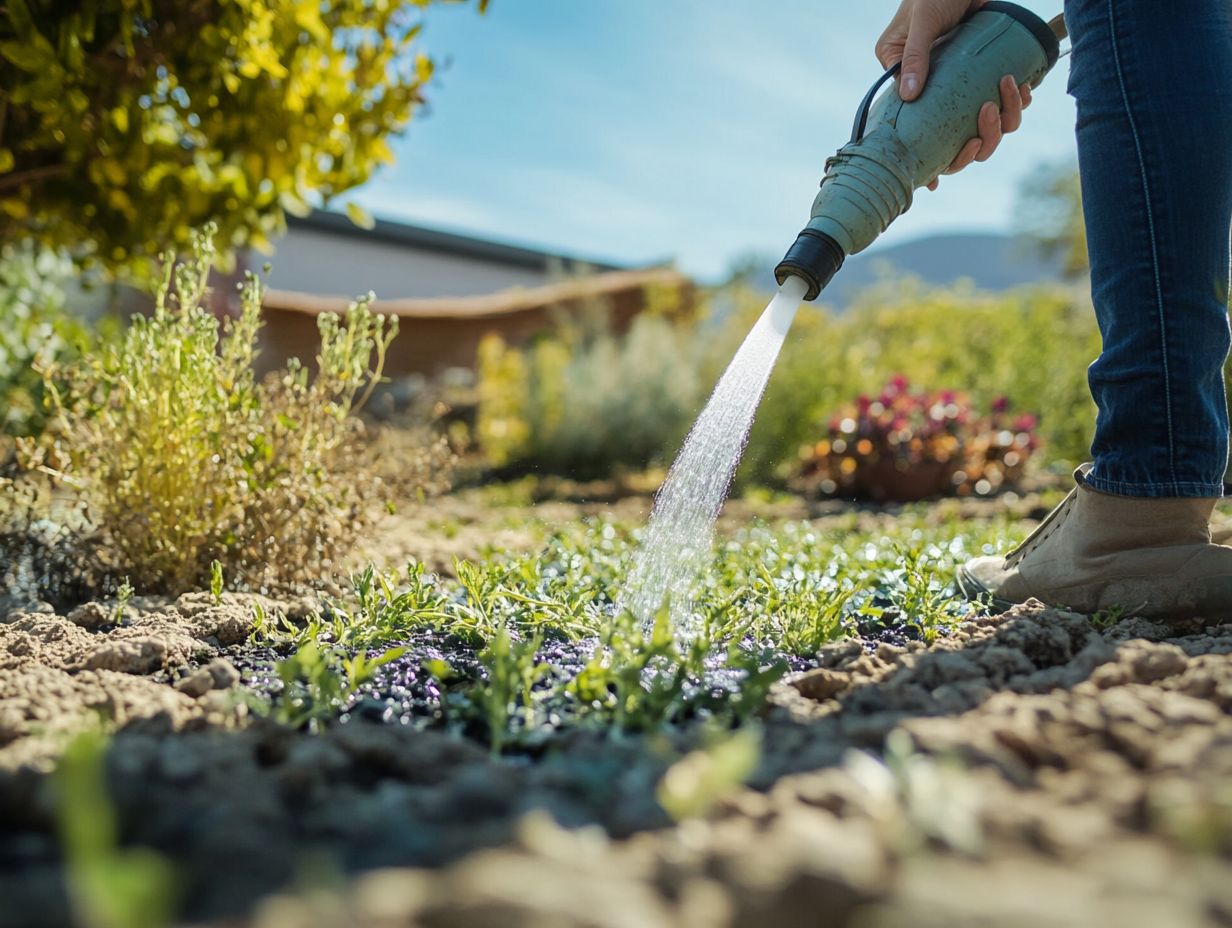
Several factors influence your water usage in lawn care, including the type of grass species, local watering conditions, and the moisture-holding capacity of your soil.
You can enhance this capacity through mulch and effective irrigation components. Your choice of grass species plays a pivotal role in determining your lawn’s water needs. Some varieties are more drought-resistant, flourishing in arid climates with less frequent watering.
Local climate conditions also matter; if you live in an area with high temperatures and low rainfall, you ll likely need to provide more water compared to regions with milder conditions.
Using mulch is a smart strategy as it forms a barrier against evaporation, improving moisture retention in the soil while suppressing weeds that compete for vital water resources.
By employing efficient irrigation components, such as drip systems or rain sensors, you can optimize your water usage ensuring that just the right amount reaches your plants, reducing waste, and promoting the overall health of your lawn.
Take the first step towards a greener lawn start conserving water now!
Water-Saving Techniques for Lawn Care
Implementing water-saving techniques for your lawn care is crucial for promoting efficient outdoor water use.
Methods such as smart irrigation systems, drip irrigation, and an irrigation controller equipped with automatic rain shutoff can dramatically reduce your water consumption. These techniques ensure your lawn remains vibrant and healthy.
Efficient Irrigation Methods
Efficient irrigation methods, like drip irrigation systems with water delivery devices, can significantly reduce water waste. They deliver precise amounts of moisture directly to the roots of your plants.
This approach enhances your watering frequency and promotes healthier growth. Sprinklers and soaker hoses also offer effective alternatives for various landscapes.
Each method operates differently. For example, sprinkler systems distribute water in a circular pattern, while soaker hoses gradually release moisture over time.
The benefits are numerous: reduced runoff, targeted watering, and improved soil absorption. However, proper installation and regular maintenance are essential for optimal performance.
Regular checks are crucial to keep everything running efficiently. This helps you conserve water while ensuring your plants receive the moisture they need to thrive.
Choosing Drought-Resistant Plants
Choosing drought-resistant plants and native species for your landscape can significantly reduce water consumption. This enhances your lawn’s resilience against harsh weather conditions, especially in drought-prone areas.
These plants require less irrigation and thrive in local soil conditions. This means you ll need fewer fertilizers and enjoy lower maintenance.
Imagine incorporating species like lavender, yarrow, or native grasses into your garden. It creates a stunning landscape that supports local wildlife while conserving precious resources.
By embracing sustainable landscaping practices, you ll enjoy a low-maintenance yard and contribute to environmental preservation. These choices promote biodiversity, help prevent soil erosion, and contribute to healthier ecosystems.
Other Ways to Conserve Water in Your Lawn
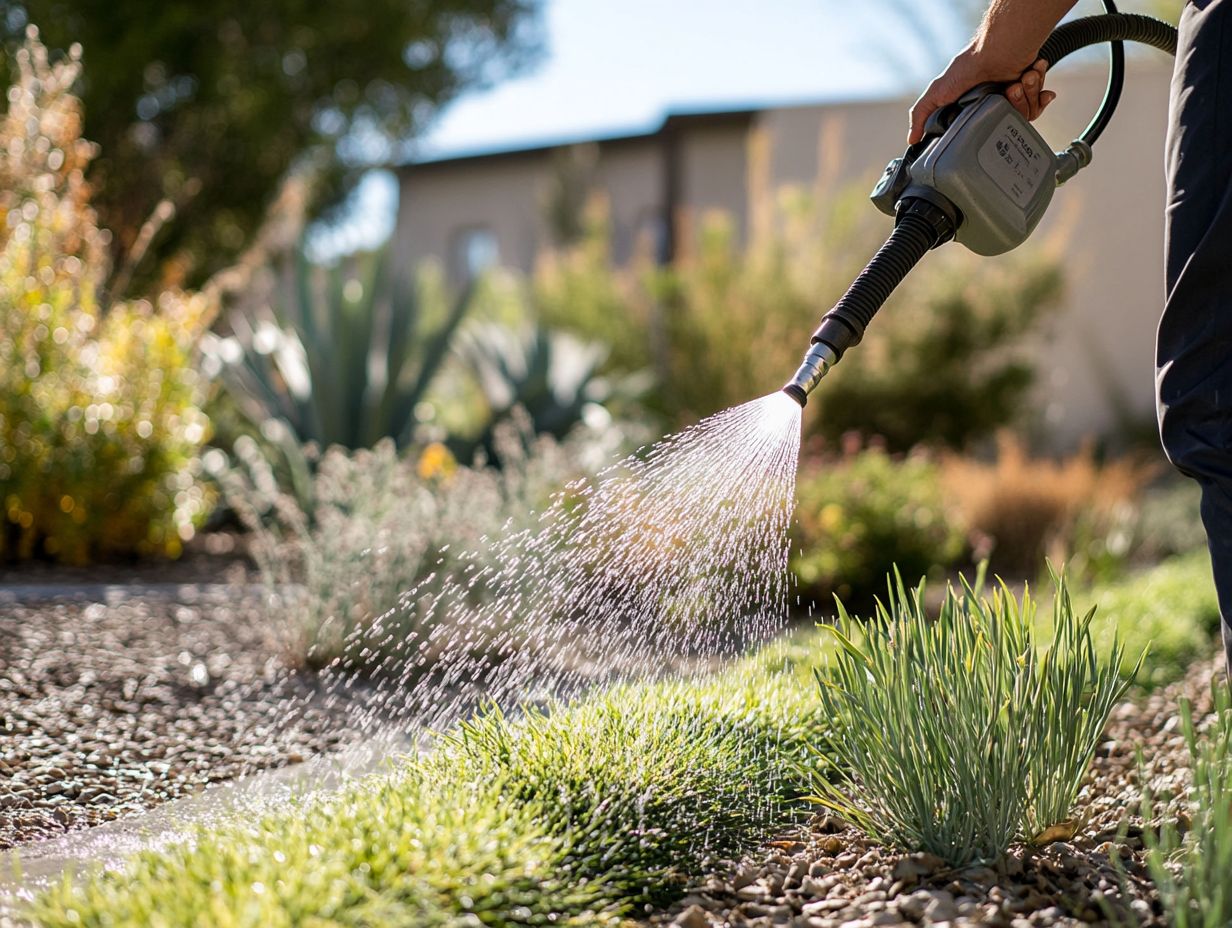
Along with efficient irrigation methods, elevate your water conservation efforts by implementing strategies like water recycling and utilizing rain barrels. Incorporating grass clippings into your lawn maintenance also helps.
These approaches enhance your water-saving initiatives and contribute to a sustainable landscape that thrives in harmony with nature.
Proper Maintenance and Management
Proper maintenance and management of your lawn require a thoughtful approach. Establish a strategic watering schedule and consider early morning watering practices.
Understanding appropriate watering depths promotes optimal growth while conserving water. Timing your watering correctly maximizes absorption and minimizes evaporation.
The depth of your watering also plays a significant role in root health. If the soil is watered too shallowly, roots may struggle to develop, resulting in weaker plants.
The expertise of irrigation contractors is essential. They assess your landscape needs and create tailored irrigation systems that enhance plant health and incorporate water-saving technologies.
Their insights enable you to establish a successful lawn care strategy that balances visual appeal with environmental responsibility.
Frequently Asked Questions
What Are Some Water-Saving Tips for Lawn Care?
- Use a rain barrel to collect and store rainwater for watering your lawn.
- Adjust your sprinkler system to avoid watering driveways and sidewalks.
- Use a soaker hose or drip irrigation system instead of a sprinkler to reduce water waste.
- Water early in the morning or late in the evening to minimize evaporation.
- Consider planting drought-resistant grass or native plants in your lawn.
- Don’t overwater your lawn; most lawns only need about 1 inch of water per week.
How can I reduce water consumption while still maintaining a healthy lawn?
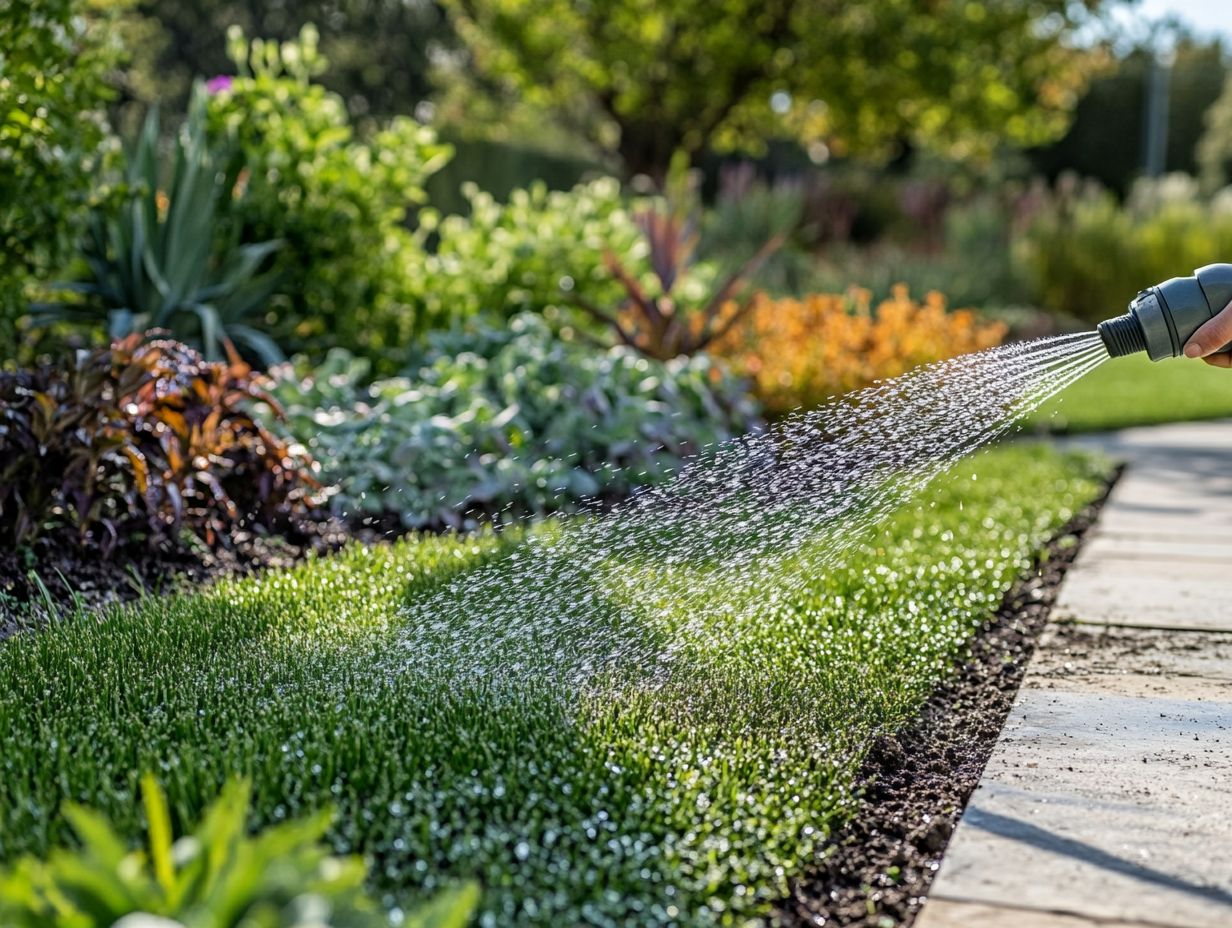
1. Mow your lawn at a taller height. This promotes deeper root growth and reduces water evaporation.
2. Leave grass clippings on your lawn. They act as a natural fertilizer and help retain moisture.
3. Use a mulching lawn mower. It helps retain moisture in the soil.
4. Apply a layer of organic mulch around plants and trees. This helps keep the soil moist.
5. Use a broom or blower to clean off sidewalks and driveways. This prevents unnecessary water waste.
6. Fix any leaks in outdoor faucets or sprinkler systems. This stops water waste.
Are there any specific lawn care techniques that can help conserve water?
1. Aerate your lawn by making small holes. This helps water soak in better and promotes root growth.
2. Use a rain gauge to see how much water your lawn gets. Adjust your watering based on this information.
3. Choose native plants and grasses. They are adapted to your local climate and require less water.
4. Water deeply and less frequently. This encourages deep root growth.
5. Group plants with similar watering needs together. This helps avoid overwatering certain areas.
6. Use a rain sensor or smart irrigation system. These automatically adjust watering based on weather conditions.
What are some other ways I can save water in my lawn care routine?
1. Use a broom or leaf blower instead of a hose to clean off outdoor furniture or play equipment.
2. Place a layer of mulch around trees and shrubs. This helps retain moisture and reduces the need for watering.
3. Use a pool cover to reduce water evaporation. This cuts down on the need for frequent refilling.
4. Regularly check for and repair any leaky sprinkler heads or hoses. This prevents water waste.
5. Choose a drought-tolerant grass species when seeding or overseeding your lawn.
6. Transform your garden with a drip irrigation system! It saves water and keeps your plants thriving.
Are there any tips specifically for maintaining a lawn during a drought?
1. Avoid fertilizing your lawn during a drought. Fertilizers can increase the need for more frequent watering.
2. Keep your lawn mower blades sharp. This avoids damaging the grass and promoting water loss.
3. Use a broom or rake to remove debris from your lawn instead of hosing it down.
4. Consider replacing your lawn with drought-resistant plants or hardscaping. This reduces water usage.
5. Only water your lawn when it truly needs it. Try to do this during cooler parts of the day.
6. Consider taking shorter showers or using a low-flow showerhead. This helps reduce overall water consumption in your home.
Start today and see the difference in your lawn and water bill!

